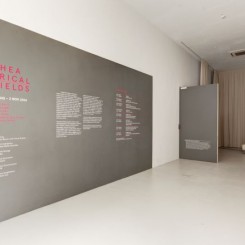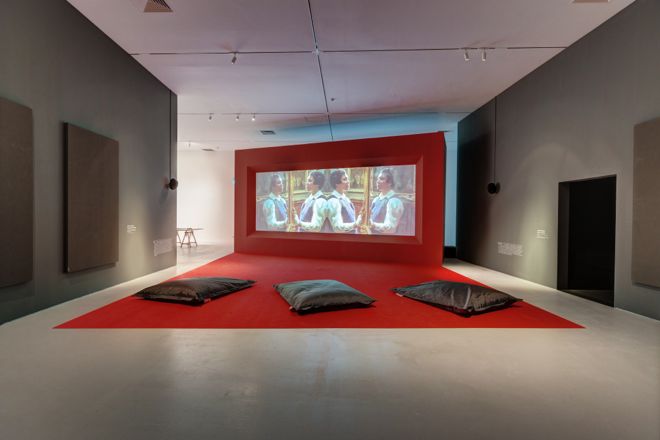Centre for Contemporary Art Singapore (43 Malan Road, Singapore), Aug 22–Nov 2, 2014
At times reveling in cinematic grandiloquence, or outright rejecting it, or embedded within disparate installations and performances, video-based art is very much a part of the chimeric nature of contemporary art—a field in which easy definitions seem like a fool’s errand. What might assist us in orientating ourselves in such a diverse field, however, is to view it through an intertwining of theory and theatricality; as the Centre for Contemporary Art’s director Ute Meta Bauer notes in her introduction to the CCA’s latest show, “Theatrical Fields”, both emerge from the same root word: “thea” which means “to see.”
Bringing six seminal video installations to Southeast Asia for the first time, “Theatrical Fields” is, as the title suggests, devoted to the notion of theatricality—though in a sense that extends far beyond the trappings and traditions of the stage. In this aim, the show takes a somewhat broader view, encompassing, for instance, the rituals and conventions that define our everyday experiences, and using theatrical elements such as “script” and “voice” as points of departure to examine the world around us—an approach somehow reminiscent of the use of toy models in theoretical physics, abstracted or simplified systems used by physicists to investigate physical phenomena. Theatricality, then, is not confined to aesthetic concerns, but is instead employed for a general project of translating linearity and simple solidity to ambiguity, nuance and diversity.
Exemplifying this tendency towards complexity is Constanze Ruhm’s “X Characters: RE(hers)AL” (2004) in which seven female characters from iconic films find themselves mired in one of the contemporary world’s many forms of limbo—an airport’s boarding area. Though the audience’s experience of the video is framed by vivid posters detailing each of the work’s characters, the characters find themselves adrift, cut loose from their familiar narrative settings—theatrical reagents poured into a reactor and left to cook, successively generating unlooked-for interactions.
Stan Douglas’ “Suspiria” (2003), on the other hand, takes a more technical approach in generating ambiguity and diversity in a manner that both extends and confounds our narrative expectations. Although it seems at first to be a strangely shot (backdrops of dun-colored stonework overlaid with snatches of narrative scenes in lurid technicolor), fantastical tale in the tradition of the Brothers Grimm, as the loosely connected scenes proceed with no clear end in sight, it’s clear that there’s more to it. The sequence of scenes, rather than conforming to some theatrical narrative convention, is instead randomly generated by software. This generative randomness, at once refreshing and indifferent, allows “Suspiria” to grind away into infinity with little chance of the audience re-encountering the same sequences, perhaps presaging the limitless plenitude of the then yet-to-be founded YouTube.
This disavowal of simple linearity also finds expression in the overall experience of the show itself, with each work being more or less compartmentalized from the others. It is for the practical purpose of preventing the sights and sounds of each work from spilling over too much, of course, but in practice one experiences the exhibition by composing a path through and into each work’s space, seeing one work after another, as with Judith Barry’s “Voice off” (1999), which cannot be experienced in whole from a single position.
Even discounting the infinite duration in “Suspiria”, the show as a whole clocks an overall run time of over three hours, a figure that hints at a sheer mass of informational and sensory fatigue. It is a daunting prospect for all but the most ardent fans of video art, especially if one takes the view that one should start watching as the work begins, and hold fast for its entire duration—a demand on patience and attention that seems almost imperious, perhaps leaving viewers coolly unmoved as they skip from one fragment to the next. Then again, such an approach could instead be thought of as a fragmentary mode of encounter as one passes through successive intermissions/cross-fades of relative darkness and silence, generating thoughts and reactions as one charts a physical and temporal course through “Theatrical Fields.”
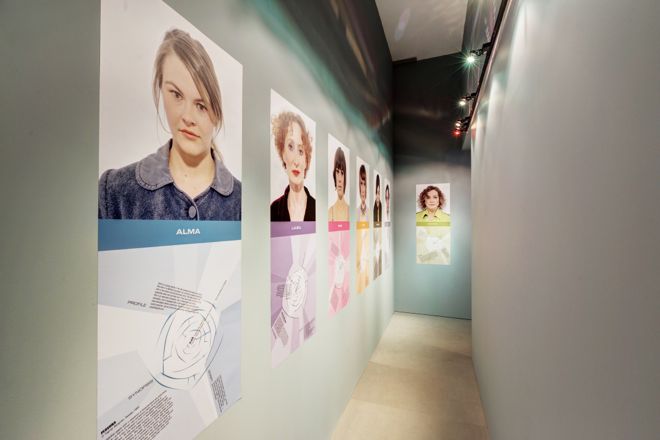
Constanze Ruhm, “X Characters”, single-channel film projection, color, sound (Digibeta 2004), 74 min., looped, 2004 (image courtesy of CCA Singapore)
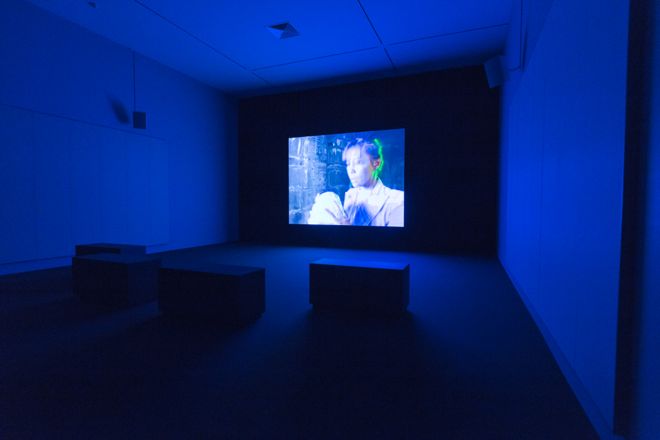
Stan Douglas, “Suspiria”, installation, single-channel video projection, stereo sound, 2003 (stories recomposed and music remixed in virtually infinite variations, image courtesy of CCA Singapore)

Judith Barry, “Voice off”, installation, two-channel video projection, color, sound, 15 min., looped, 1999 (image courtesy of CCA Singapore)
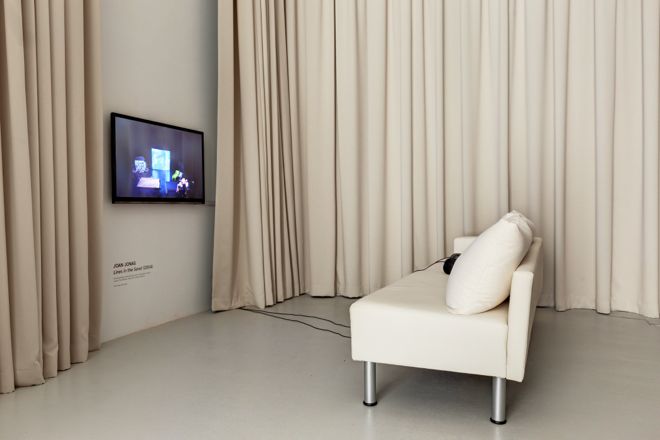
Joan Jonas, “Lines in the Sand”, multi-media installation: 3 video elements, looped, sound, various props, 2002 (image courtesy of CCA Singapore)
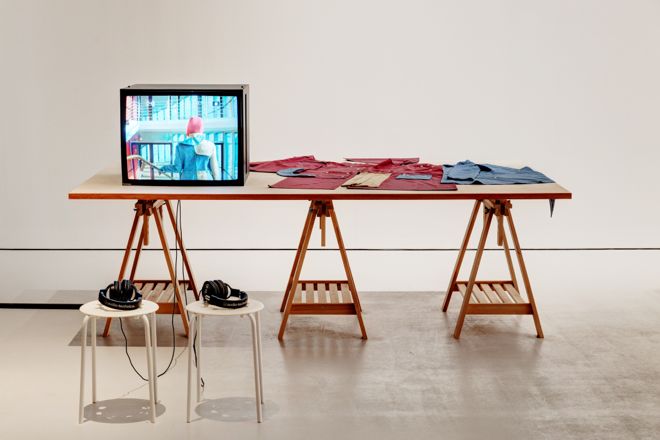
Eva Meyer and Eran Schaerf, “She Might Belong to You”, single channel film, color, sound, 37 min (Sound: Peter Steckroth), in German with English subtitles, 2007 (image courtesy of CCA Singapore)
